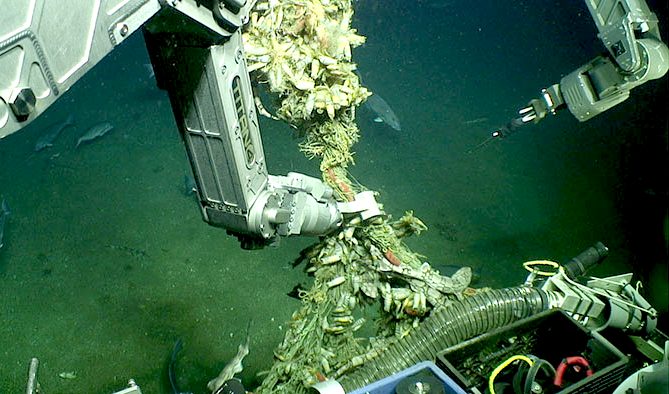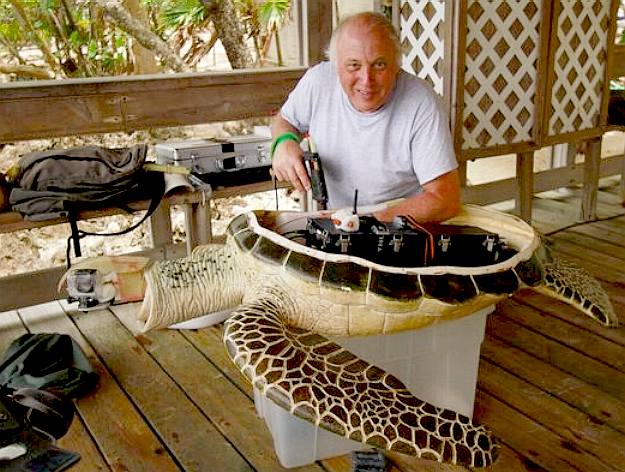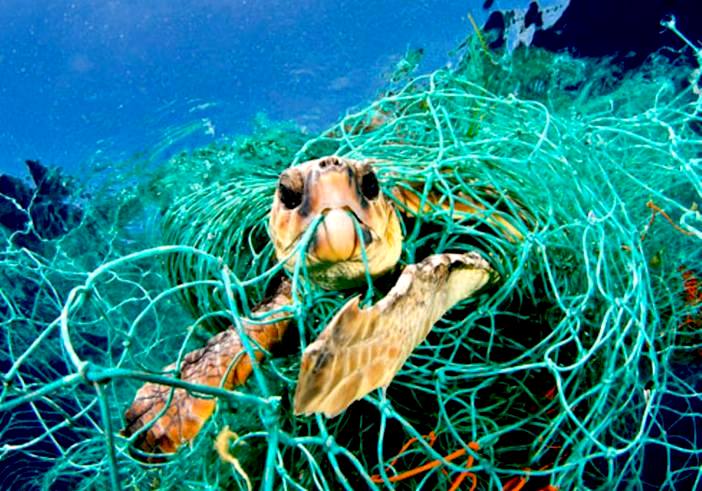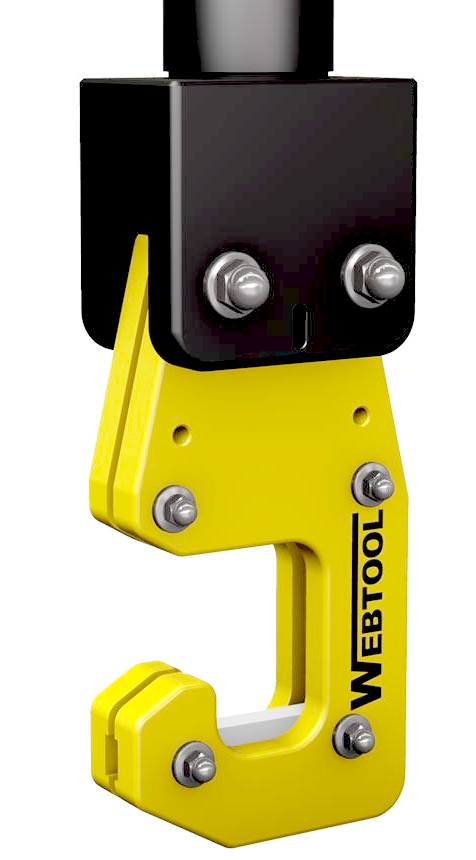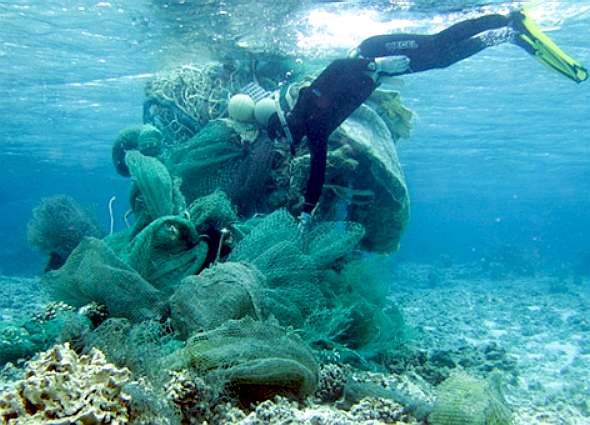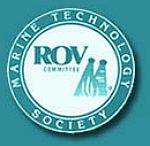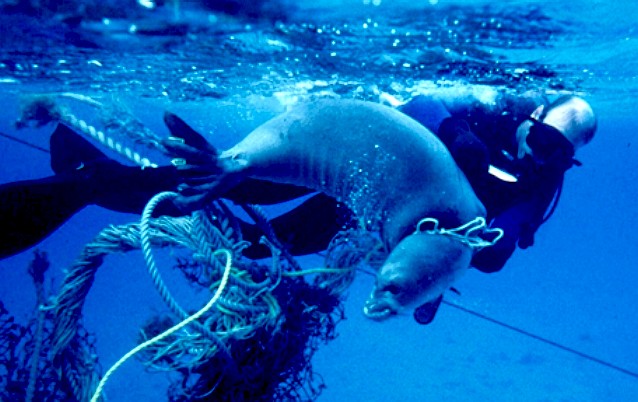|
SEAVAX ™ - REMOTELY OPERATED RESCUE VEHICLE (RORV)
|
|
|
Many wrecks have been significantly damaged in recent years by commercial fishing gear. The above picture is of a wreck snagged by trawl nets suspended by floats in the water column. One net floated up 20 meters above the hull. ROVs are useful tools for cutting nets free.
R.O.V.s come in all shapes and sizes. There is a pretty much standard design layout due the the physics of flotation, but the specification in terms of capacities and onboard equipment is a relative minefield to a layperson or experienced designer coming fresh to the fray.
BMS are interested in carrying an ROV onboard SeaVax™ ships that we can launch and recover remotely - that is without an operator onboard the vessel. That is a major difference to the way other ROVs are deployed, and if we can get it to work, perhaps with collaborative help from experts - it will advance marine science considerably.
This ROV should be designed to cut ropes and nets efficiently, with sufficient dexterity that skittish marine mammals will not harm themselves as they panic. It's not like when a diver helps to free a seal or whale, because there is no obvious life-to-life bond, that can quickly establish in some cases. An ROV is an alien entity in the oceans, so less likely to be tolerated by animals.
RORVs and ANIMATRONICS - The sea is full of weird creatures – none more strange than these lifelike spy robots used to film the private lives of dolphins for BBC television. Radio-controlled swimming models are fitted with HD cameras to capture unique footage of the unsuspecting marine mammals. What might look like a colorful fish, squid, giant clam or turtle has at its heart a small submersible packed with high-tech equipment. There are even motorised model dolphins, so realistic that the real ones – among the smartest animals on earth – happily accepted them into family groups. This tends to suggest that a rescue ROV that is suitably disguised to look more friendly, will stand more chance of rescuing a trapped mammal without unduly stressing the animal, than if not adapted psychologically. Turtle and other robot animals by: John Downer Productions Ltd. Leighside, Bridge Road, Leigh Woods, Bristol, BS8 3PB, UK. Tel: +44 (0) 117 923 8088 Fax: +44 (0) 117 974 1612
MARINE ANIMATRONICS
It follows that an ROV dedicated to marine animal rescue, should be more friendly on the eye and possibly able to communicate audibly to be able to calm a distressed animal. This sometimes has an effect on a man-to-animal basis, but does it really work, or do we just think voice communication helps a trapped or injured animal?
What is clear from the work by John Downer Productions, for the BBC is that robot submarines disguised as animals appear to be accepted by real animals. There are many companies producing animals that move realistically, such as Ocean Art in China and Animatronics in the US. We don't need this level of sophistication, we just need a simple shell (fairing) over an existing ROV that goes some way to alleviating the mechanical appearance.
DRONE COMMS
Such operations are likely to be remote controlled, via satellite comms rather than fully autonomous robotically. The question here then is, is that possible given the current state of the art? This is a technical issue that needs to be resolved if unmanned ships are to operate for the most part autonomously, but with drone capability.
LAUNCH & RECOVERY
Launch and recovery of a rescue ROV (RROV) from a SeaVax ship will have to be fully automatic.
This turtle had no chance of getting itself out of this mess of netting.
WHAT IS AN ROV?
A Remotely Operated Vehicle (ROV) is a tethered underwater drone or robot that allows the vehicle's operator to remain in a comfortable environment while the ROV works in the hazardous environment below. The typical ROV system is comprised of the vehicle, which is connected to a control van and the operators on the surface by a tether or umbilical - a group of cables that carry electrical power, video and data signals back and forth between the operator and the vehicle - a handling system to control the cable dynamics, a launch system and associated power supplies.
A typical ROV at the business end, with the manipulators, lights and cameras. This machine might be a little on the large size for our application. But, imagine if you will, a casing that makes it appear less unfriendly. Would that be a seal, turtle, dolphin or what? It's a tricky question because the normal arrangement is not really suitable for any of these. If you have any thoughts on the subject, please get in touch.
High power applications will often use hydraulics in addition to electrical cabling. In many cases, the umbilical includes additional strength members to allow recovery of heavy devices or wreckage
Most ROVs are equipped with at least a video camera and lights. Additional equipment is commonly added to expand the vehicle’s capabilities. These may include sonars, magnetometers, a still camera, a manipulator or cutting arm, water samplers, and instruments that measure water clarity, light penetration and temperature.
ROV MANIPULATORS
The choice and integration of a manipulator system is complex. The vehicle designer should consider the following: number and types required, their location, required control type (rate, spatially correspondent, force feedback), lift, maximum (and minimum) reach, and camera locations, because, if you can’t see it; you can’t manipulate it.
Remote manipulation (also called teleoperation) allows human operators working from the surface to manipulate underwater objects. A telerobotic manipulator is the mechanical equivalent of human arms and hands.
The NOAA cleared 14 tons of discarded fishing nets from the coast of Hawaii. Humpback whales, seals and turtles regularly get caught up in discarded fishing nets and drown, or inflict terrible wounds on themselves trying to escape.
LINKS
Ocean explorer noaa explorations mid atlantic NOAA-lifts-14-metric-tons-fishing-nets-and-plastics-hawaiian-coral-reefs The Daily Mirror news technology robot dolphins turtles shellfish spies http://www.societyofrobots.com/misc_robot_shark_1.shtml http://www.smarthome.com/remote-control-shark.html http://www.tested.com/art/movies/456576-robot-shark-technology-jaws/ http://www.theguardian.com/film/gallery/2012/sep/27/sharks-jaws-spielberg-in-pictures http://animatronicrobotics.com/ http://en.wikipedia.org/wiki/Biomorphic_robotics http://www.dino.cc/en/index.aspx http://www.alibaba.com/showroom/animatronic-turtle.html http://www.mirror.co.uk/news/technology-science/technology/robot-dolphins-turtles-shellfish-used-2951264 http://www.rov.org/rov_design_manipulators.cfm http://oceanexplorer.noaa.gov/explorations/13midatlantic/logs/may22/may22.html
Youtube
ARCTIC - ATLANTIC - BALTIC - BERING - CARIBBEAN - CORAL - EAST CHINA - ENGLISH CH - GULF MEXICO GOC - INDIAN - MEDITERRANEAN - NORTH SEA - PACIFIC - PERSIAN GULF - SEA JAPAN - STH CHINA PLANKTON - PLASTIC OCEANS - RISING SEA LEVELS - UNEP
A diver frees a seal caught up in old fishing gear. Our love affair with plastic is choking the oceans. Once people know about it, they want to stop it. But how and who? BMS has teamed up with the Cleaner Oceans (Planet) Trust to raise funds to build and test a full size prototype. Cleaner Planet Trust is a charitable, not for profit organization governed by Trustees.
|
|
|
This website is Copyright © 2015 Bluebird Marine Systems Ltd. The names Bluebird™, Bluefish™, SeaNet™, SeaVax™ and the blue bird and fish in flight logos are trademarks. CONTACTS The color blue is a protected feature of the trademarks.
|
